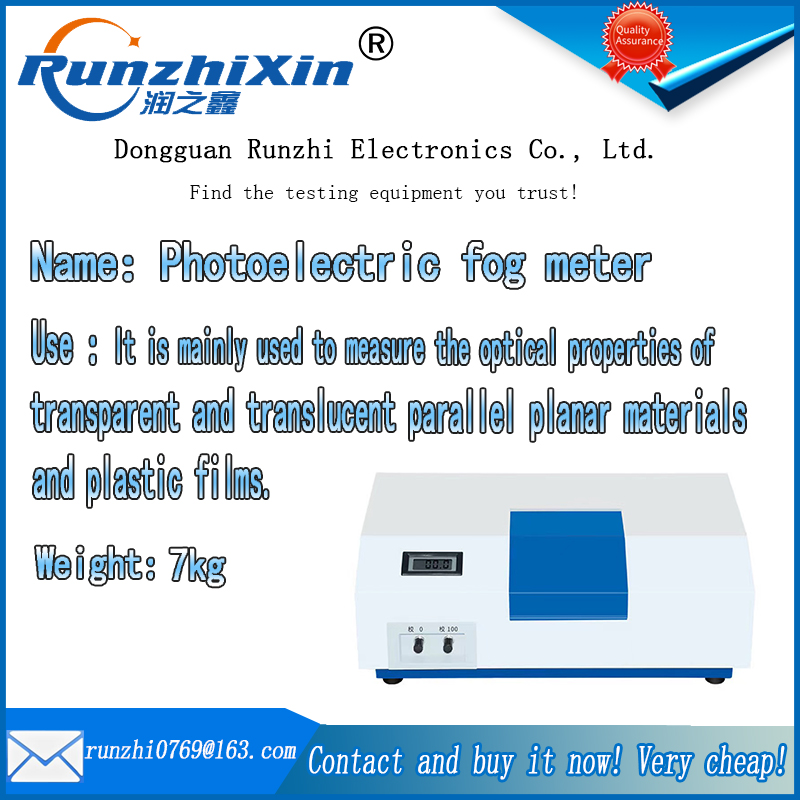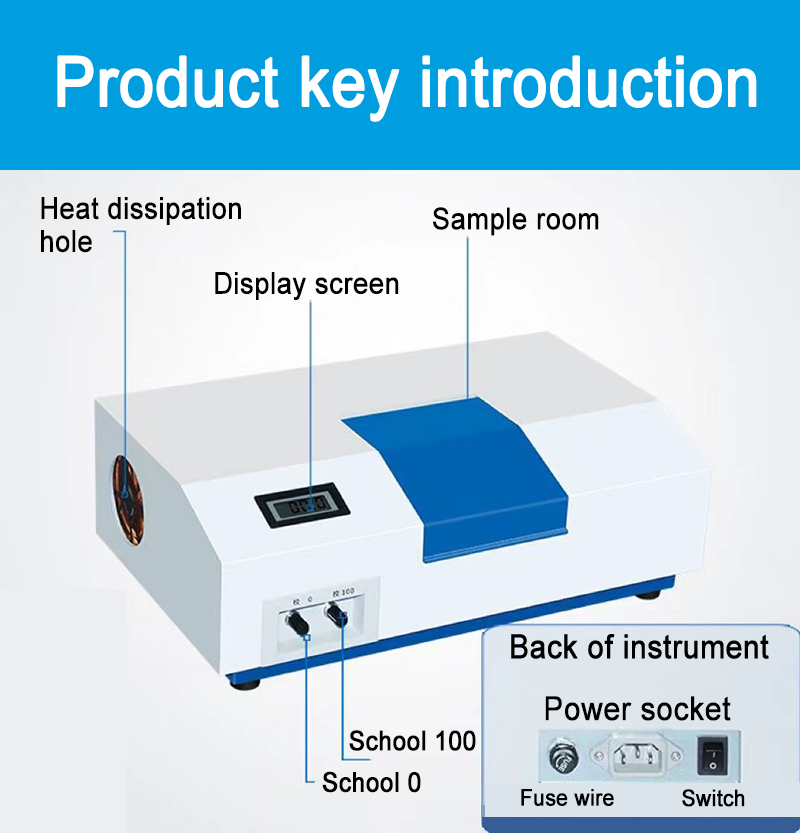
Product introduction of photoelectric haze meter:
1. The photoelectric haze meter is suitable for testing the light transmittance, transmittance haze and reflectivity of all transparent and translucent parallel plane samples (plastic plates, sheets, plastic films, flat glass), and is also suitable for liquid samples (water , beverages, pharmaceuticals, coloring solutions, oils) turbidity measurement, such as: glass, plastic film, photosensitive film, electronic product screen, etc., has a wide range of applications in national defense research and industrial and agricultural production.
2. The photoelectric haze meter is designed in accordance with GB/T2410-2008, ASTM D1003-2007, J1S K7105-81 and other standards.
3. The photoelectric haze meter is a manual zero calibration instrument, suitable for small and medium samples.

Optical system and electrical principle of photoelectric haze meter:
The light emitted by the light source (halogen lamp) is converged on the focal point of the objective lens. Therefore, the outgoing light is a bundle of parallel light. The diameter of the diaphragm L ensures that the light exiting the objective lens is within the range of ±3°. The imaging on the diaphragm passes through the objective lens The light spot formed on the exit window of the integrating sphere is a ring of L3°. The opening angle of the exit window to the center of the incident window is 8°. When measuring light transmittance, the reflector on the right always blocks the integrating sphere. When there is no sample, the integral The light energy measured by the ball is the total light of the instrument; after the sample is placed, it is the total light of the sample. Since the light transmittance is the ratio of the total light (incident light) of the sample, as long as the total light is adjusted to 100%, the sample will The measured data is the light transmittance (%). When measuring the haze, the position of the reflector should be changed. Since the haze is the percentage of the light energy transmitted through the sample, the light energy transmitted through the sample is Full light needs to pull the reflector "on pull", so that all the direct light and scattered light passing through the sample are received by the integrating sphere. When measuring the scattered light passing through the sample, it is necessary to remove the reflector (pull the handle away) and replace it with a light trap to absorb the light passing through the exit window in the light trap. At this time, only the scattered light of the sample is accepted by the integrating sphere. If the total light transmitted through the sample is adjusted to 100% first, the data obtained when measuring the scattered light is the haze value (%).

The operation method of photoelectric haze meter:
1. Insert the power plug of the photoelectric haze meter into the 220V AC current, and ground the ground pin reliably.
2. Turn on the machine and preheat the photoelectric haze meter for a few minutes. At this time, the handle of the photoelectric haze meter should be in the close position. After the light source is stable and the displayed number no longer changes, you can test.
3. Measure the light transmittance (the handle is at the closer position): calibration: "0": use the blackboard to block the integrating sphere from entering the window, adjust the calibration "0" potentiometer until the reading is "0"; calibration "100": take out the blackboard, Adjust the "100" potentiometer until the reading is "100"; adjust "0" and "100" several times until the reading is stable. Test: put the sample, and the obtained data is the light transmittance (%).
4. Measuring haze: Calibrate "0": When the handle is in the push-open position and there is no sample in the sample chamber, adjust the potentiometer "0" to read "0"; Calibrate "100": When the handle is in the push-open position, When putting the sample in the sample chamber, adjust the "100" potentiometer until the reading is "100", adjust "0" and adjust "100" several times until the reading is stable. Test: When sending the sample, put the handle of the reflector in the push-off position, and the reading obtained is the haze value (%).

Dongguan Runzhi Electronics Co., LTD. - Testing Instrument Division, founded in 2011, is a high-tech enterprise with many years of professional electronic technology and instrument research and development professionals to set up a set of professional laboratory testing equipment, research, development, manufacturing.
Dongguan Runzhi Electronics Co., Ltd. mainly engaged in special instruments and equipment are: Laboratory environment test instrument, element detection instrument, floor residual pitting meter, lock size tester, straight Angle detector, microcomputer push tension meter, static bending strength testing machine, high-precision image projector, caster testing machine, falling ball tester, falling sand meter, 90 degree peeling strength testing machine, scratch resistance tester, wear resistance tester, gloss meter, whiteness meter, Energy meter, hydrometer, infrared thermometer, viscometer, thickness meter, depth meter, analytical balance, caliper, gauge and other instruments and equipment.
Dongguan Runzhi Electronics Co., Ltd. operating products with strong targeting, a wide variety of functions, excellent quality, adequate inventory, after-sales support and other advantages, welcome new and old customers all over the country to call to mail consultation:
Website: https://www.instrumentvip.com/
Tel: 86+13712847488
Contact person: Mr. Zheng

